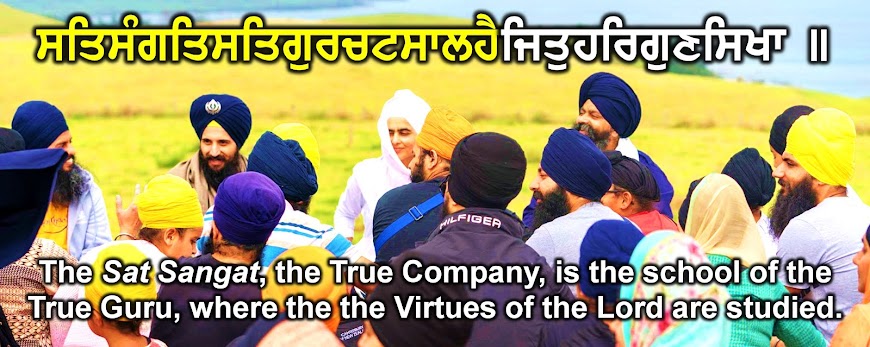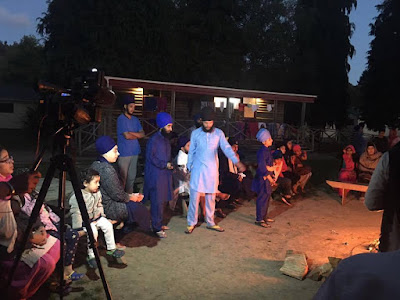With the blessings of Guru Sahib, Khalsa Camp New Zealand was held from 19th to 23rd December 2016 at Camp Adair in Hanua. This was the first time that Khalsa Camp has taken place in New Zealand. Khalsa Camp was the first ever residential Sikh camp in the UK, which was established in 1990. It has since expanded across the world and has been providing inspiration and motivation to young and old seeking to discover the spirit within in Canada, USA, India, Australia and now New Zealand.
The camp was attended by around 80-100 people. The target audience was 16+ years, however families attended. The invited speakers for the camp included by Bhai Surjit Singh Ji Nadala (India), and Bhai Sukhwinder Singh Ji from Vismaad Productions (India). Bhai Surjit Singh talked about the purpose of life and basics of Gursikhi Jeevan, and Bhai Sukhwinder Singh talked about the responsibilities of wearing a Dastaar and what the Dastaar stands for, as well as a lecture on the power of Gurbani to transform someone. The seva given to Daas was to speak on was how we have to come to this earth to gain profit, and life after death in accordance to Gurbani.
Bhai Jatinder Singh Ji, Bhai Harpreet Singh Ji and all other camp Sevadaars from Khalsa Camp New Zealand team did amazing job in organising the camp! All the outside speakers and guests were amazed at how smoothly the camp ran. The organisers had arranged really good activities to ensure all campers got to know one other, and helped to create relaxed and welcoming spiritual environment. Considering it was the first ever camp, I was very impressed and it felt like the organizers had been organizing such camps for a long time. Having been to many camps, this camp left a very positive impression on my mind. Khalsa Camp New Zealand was such a success that with Guru
Ji's Kirpaa 10 people went to receive Khande-Di-Pahul and join the Khalsa family the following week. I hope the camp sevadaars continue to do the good work and with Guru Sahib's blessings Khalsa Camp New Zealand grows in its success.
The camp day would begin with Amrit-vela Naam Simran and Nitnem from 3am to 6am. At 8.45am, after breakfast, the first presentation took place. After a short break, there would be different workshops, followed by lunch. After lunch, the second presentation took place, followed by workshops. Then there would be activities, followed by evening divaan and then Langar.
Some photos from Khalsa Camp New Zealand:
Guru Ji's Darbaar
Amrit-Vela Simran
Lecture by Bhai Surjit Singh Ji

Lecture by Bhai Sukhwinder Singh Ji
Questions and answers session
Archery

High ropes
Kayaking
Activity time
Activity time
Bhai Navraj Singh (Pilot), Bhai Amritpal Singh Nihang Ji, and Bhai Gurpreet Singh (Tabla Master)
Lunchtime stroll
Gursikhs from Christchurch
Bonfire night
Gurbani and Sikh History version of Charades game
Group photo with Sevadaars
Last divaan. Bhai Sukhwinder Singh Ji singing: ਬਿਲਛਿ ਬਿਨੋਦ ਆਨੰਦ ਸੁਖ ਮਾਣਹੁ ਖਾਇ ਜੀਵਹੁ ਸਿਖ ਪਰਵਾਰ ||੧|| (Revel in it, delight in it, be happy and enjoy peace, and live long, O my family of Sikhs.)
Sangat during last divaan
Camp co-ordinator, Bhai Harpreet Singh, addressing Sangat in final divaan

Young camper, Jasjot Singh, singing Kaveeshree (poetry) about Sardar Hari Singh Nalwa. It was very impressive!

Group photo before leaving camp site
Dhan Hai Guru! Dhan Hai Teree Sikhee!
























































